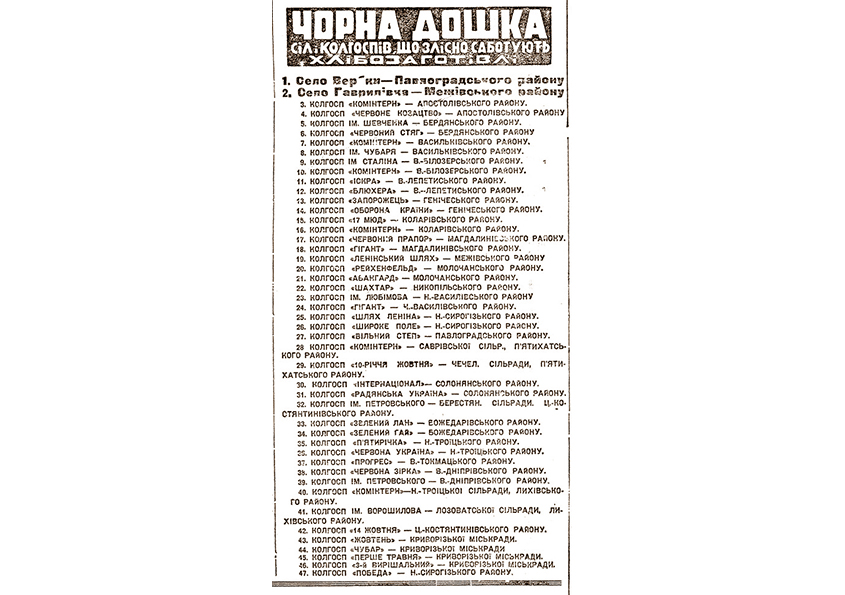On December 6, 1932, the Politburo of the Central Committee of the Communist party and the Soviet People's Commissar of the USSR adopted a resolution "On the blacklisting of villages that maliciously sabotage grain procurement."
The concept of "black boards" in Ukrainian history is not new and dates back to the times of the Russian Empire. However, then they were used in educational institutions. Successful students were entered on the "red board", and those who fell behind - on the "black".
During the Holodomor, the Bolshevik leadership of the USSR resumed this practice. But at the time, being blacklisted actually meant a collective death sentence.
For the first time, the Soviet authorities resorted to this mechanism of punishment at the end of the autumn of 1932. On November 18, the Central Committee of the Communist party issued a resolution "On Measures to Strengthen Bread Procurement." Settlements that did not fulfill the bread delivery plans were put on the "black board". In practice, this meant that the supply of industrial goods was stopped there and previously imported manufactured goods were confiscated; persons who did not hand over the proper amount of grain were subject to a meat fine in kind, and all previously issued grain was confiscated from such collective farmers; loans were forcibly collected ahead of schedule.
The next resolution, dated December 6, only strengthened these measures. From that moment on, the lagging collective farms stopped cultivating land with machine-tractor stations (MTS), introduced the practice of "cleansing", i.e. arrests and deportations of the so-called "Petliur and kulak elements", as well as local and Soviet leadership, which failed to implement the grain plan. The villages were surrounded by special units to regulate and stop the movement of the population.
It is clear that after using all these measures, the settlements that fell on the "black boards" were doomed to slow extinction.
Here is how R. Pisnyi from Zhytomyr recalled this moment: “Red and black boards were brought. Those who did not comply with the tax and are written on the blackboard are judged by three (judge, prosecutor, clerk). They are sentenced to do it in 3 days, and when they don't do it, they sell the farm. Absolutely! Including clothes! ”
Entire districts, separate district institutions, village councils, collective farms or separate collective farmers and individuals were entered on the "black boards". On December 6, 1932, the All-Ukrainian "black board" was created, which, in particular, included the villages of Verbky and Gavrylivka in the Dnipropetrovsk region.
Ukrainian researcher of this Bolshevik "invention" Georgy Papakin notes that "In fact, the regime of" Black Boards "was reduced to the creation of reservations in the USSR with conditions incompatible with life."
This instrument of murder was mainly used in Soviet Ukraine and the Kuban.
The library of Museum "Jewish Memory and Holocaust in Ukraine" offers the following publications on the Holodomor and the "blackboards":
- Hrynevych L. Chronicle of Collectivization and the Holodomor in Ukraine 1927–1933. Volume II (1929–1930). Book 1. Hrec Press, 2016. 690 p.
- Purih R. The Holodomor of 1932–1933 in Ukraine: documents and materials. K .: Publishing House "Kyiv-Mohyla Academy", 2007. 1128 p.
